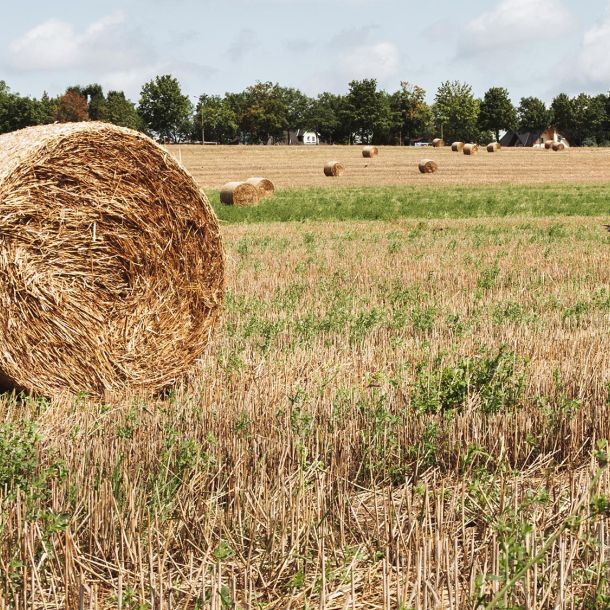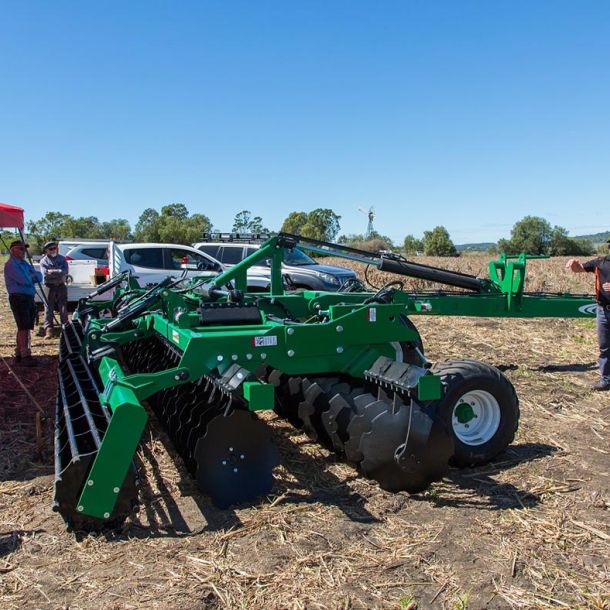What to do when the weather throws you into chaos?
Whether it's dealing with an infestation of pests or disease, managing increased weed pressure or coping with the movement of large amounts of soil, natural disasters can directly impact on the feasibility of existing farming systems.
Landowners affected by these challenges are often forced to adapt their farming practices to new and unexpected conditions, sometimes just for one season, but in other cases, for the longer term.
Paddock Conditions After Floods
Fast moving water is a law unto itself, often causing unexpected movement of large volumes of soil and organic materials. Many New South Wales farmers affected by the record floods in 2022, for example, have found their paddocks need extensive laser levelling or earthworks to get them back into order after large amounts of soil or debris was dumped on their land.
Some farmers have had to replace or repair their raised bed systems or controlled traffic systems which were affected by flood water. Others have had to deal with rotting plant material from failed crops or large volumes of organic material dumped on their land from upstream.
In these circumstances, existing farm machinery is not always up to the job and farmers throughout the country have found themselves exploring practices or equipment they haven’t needed in the past.
For situations where flood waters have damaged, but not destroyed, existing permanent cropping systems, strategic tillage may be required. A renovation tool such as the TrackAttack® by K-Line Ag or the K-Line Ag SpeedBuster® may be ideal for getting paddocks back into condition. The TrackAttack® is designed to level out wheel tracks, ruts and uneven terrain in controlled traffic systems while the K-Line Ag SpeedBuster® is ideal for renovating existing raised bed systems while also incorporating residue.
However, where more serious damage has occurred, a more powerful tool may be required.
The Speedtiller® by K-Line Ag is simple and robust, built to operate under tough conditions and handles heavy residue with ease. Farms with waterlogged crops that need to be ploughed in, or paddocks that have had large amounts of organic material deposited on them by flood waters, may benefit from the Speedtiller®'s efficiency, allowing farmers to get their land back into production more quickly.
While laser levelling after floods is a big expense, it also offers an opportunity to improve aspects of the farm which may have been limiting productivity beforehand, such as undulations in the landscape or inefficient row direction and length. In this way the practice change arising from a natural disaster ends up delivering a longer-term productivity benefit.
Some farmers have taken the opportunity to use the laser levelling exercise as a chance to address soil productivity constraints, with products such as compost, animal manures, lime or gypsum being applied afterwards. Unfortunately for other farmers, the loss of fertile topsoil downstream has created the need for extra lime and fertiliser to improve soil fertility before the next crop cycle.
Too much wet weather can also leave farmers struggling to deal with plant residue or crop stubble. In fact, the Grains Research and Development Corporation (GRDC) have reported that for some grain growing regions, three consecutive La Nina years led to big winter crops and many growers have found heavy stubble loads increasingly challenging to deal with at planting time.
Consecutive wet years are yet another situation where strategic tillage has a place in minimum or zero till farming systems. GRDC reports that levels of burning or cultivation rose in 2012, 2017 and 2021, after wet seasons produced heavy stubble loads in some regions of Victoria. Some farmers in long-term minimum tillage farming regions found themselves without the necessary equipment to cultivate heavy residue and investment in cultivation tools such as the K-line Ag TrackAttack® or SpeedBuster® was necessary to adapt to the changing conditions.
Weed Pressure After Natural Disasters
According to Philip Blackmore, Invasive Species Officer at NSW Department of Primary Industries (DPI), infestations of new weeds are common after natural disasters such as drought, fire and floods. Drought, for example, can devastate existing vegetation, removing competition for light, nutrients, moisture and space, which allows quick establishment of weeds when conditions are favourable.
Weeds often thrive in flood affected pasture or cropping paddocks, as competition from the established crop or pasture is reduced due to water damage, and access to paddocks for weed control purposes is delayed.
Similarly, fires can trigger the germination of dormant weeds which can also thrive due to lack of competition from established plants. Landowners in the fire ravaged area of far South Coast of NSW, for example, have struggled to control weeds triggered by fires in 2019-20 which have flourished following good rainfall in 2021, resulting in the local council being inundated with requests from landholders for help to control problem weeds.
According to NSW Local Land Services, many NSW landholders are battling to deal with increased pressure from long-established weeds that have become harder to manage after droughts, fires and floods in recent years.
Many regions are finding new weeds are taking a foothold in the aftermath of natural disasters, which causes challenges for landowners who’ve had little experience with those new species. Landholders must be vigilant in the fight against new weed infestations by ensuring that in the aftermath of a natural disaster, movement of animals, vehicles and equipment onto their property is monitored to ensure mud and dirt which may contain weed seeds is carefully managed.
As authorities throughout the country are grappling to cope with weed outbreaks resulting from natural disasters, farmers are grappling with how best to manage increased weed pressure while still maintaining their existing farming system.
While some farmers are exploring novel solutions such as goats or other grazing animals, weed seeking technology or new herbicides, there is no denying that maintaining minimum or zero tillage systems in the face of weed outbreaks is challenging and many farmers are turning once again to strategic cultivation to help them tackle problem weeds.
Making Decisions About Your Farm After a Disaster
There is no denying the stress that natural disasters place on farming families and businesses, so it’s not surprising that during these difficult times many business owners struggle to make the best decisions about how to overcome the challenges they’re facing.
According to Rural Services consultant Cam Nicholson, past negative experiences can have a major influence on future decisions, sometimes resulting in significant missed opportunities. However, he also feels a structured approach to making complex, and sometimes difficult, decisions can help in making a good decision.
Mr Nicholson believes the more difficult or complex a decision is, the more we rely on experience or the gut to inform the decision. In his experience he has noticed that our temperament influences our decision making, and many farmers have a temperament that naturally defaults to relying more on the gut and heart than the head.
Whatever challenge you may be grappling with in the aftermath of a natural disaster, it’s important to try to manage emotion-driven decisions. Landowners are encouraged to take a step back, review the situation pragmatically and seek opportunities from the disaster.








